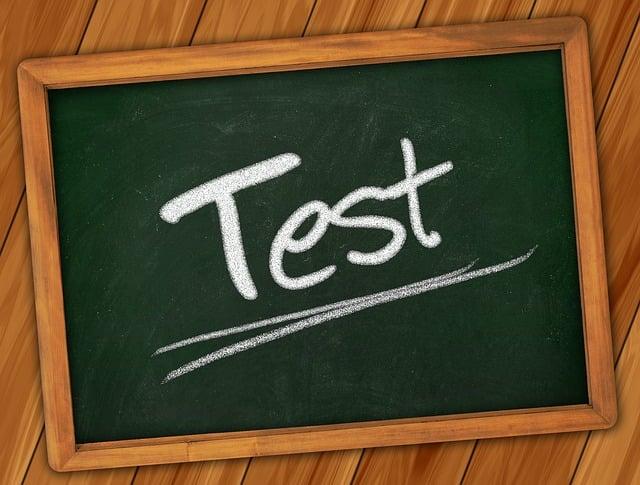Step into the world of AAI Junior Executive Common Cadre, where dreams soar high and aspirations take flight! Unveiling the gateway to success, this article delves into the treasure trove of the previous year question paper for AAI Junior Executive Common Cadre. In this intellectual adventure, we invite you to explore the boundless possibilities, dissect the complex puzzles, and immerse yourself in a riveting journey of knowledge and preparation. So fasten your seatbelts, put on your thinking caps, and get ready to embark on a quest that will transform you into an AAI champion!
Heading 1: Exam Pattern and Syllabus: A Comprehensive Analysis of AAI Junior Executive Common Cadre Previous Year Question Paper
Exam Pattern and Syllabus: A Comprehensive Analysis of AAI Junior Executive Common Cadre Previous Year Question Paper
If you are aspiring to become a part of the esteemed Airport Authority of India (AAI) as a Junior Executive, understanding the exam pattern and syllabus is crucial for your preparation. By analyzing the previous year question paper of the AAI Junior Executive Common Cadre, you can gain valuable insights into the exam structure and the topics that are typically covered. In this article, we will provide you with a comprehensive analysis of the previous year’s question paper, helping you better prepare for your upcoming examination.
To start with, let’s take a look at the exam pattern. The AAI Junior Executive Common Cadre exam consists of two stages – a written test and an interview. The written test is further divided into two parts: Part A and Part B. Part A evaluates your knowledge in subjects like General Intelligence, English Language, General Awareness, and Numerical Ability. On the other hand, Part B focuses on technical subjects related to your chosen discipline. It is essential to note that the syllabus for Part B varies depending on the discipline you have applied for, be it Civil Engineering, Electrical Engineering, Electronic Engineering, or Air Traffic Control.
Syllabus Highlights
- General Intelligence: In this section, you can expect questions to test your reasoning abilities, logical thinking, and problem-solving skills. Topics such as analogies, coding-decoding, syllogism, number series, and visual memory may be covered.
- English Language: This section evaluates your proficiency in English, including comprehension, grammar, vocabulary, and sentence formation. Questions related to synonyms, antonyms, error detection, and sentence completion are commonly asked.
- General Awareness: Your awareness of current events, national and international news, sports, awards, books, and general knowledge will be assessed in this section. Stay updated on the latest happenings to excel in this area.
- Numerical Ability: This section examines your aptitude for solving numerical problems, including topics like number systems, decimals, fractions, percentage, simple and compound interest, time and distance, and ratios.
Technical Subjects
For Part B, the syllabus focuses on technical subjects related to your chosen discipline. To give you a general idea, let’s take a glance at the core topics for each engineering discipline:
| Discipline | Core Topics |
|---|---|
| Civil Engineering | Structural Analysis, Concrete Structures, Steel Structures, Construction, Water Resources, Transportation, Soil Mechanics |
| Electrical Engineering | Electric Circuits and Fields, Electrical Machines, Power Systems, Control Systems, Measurements and Instrumentation, Power Electronics, Analog and Digital Electronics |
| Electronic Engineering | Basic Electronics, Analog and Digital Electronics, Circuits and Networks, Signals and Systems, Control Systems, Communication Systems, Microwave Engineering |
| Air Traffic Control | Aviation Meteorology, Navigation, Air Traffic Management, Aircraft Systems, Aerodromes, Communication Procedures |
By gaining a comprehensive understanding of the exam pattern and syllabus for the AAI Junior Executive Common Cadre, you can tailor your preparation strategy accordingly. Focus on strengthening your knowledge in the core topics and practicing previous year question papers to familiarize yourself with the exam format. Remember, preparation is the key to success, and with dedication and perseverance, you can excel in your AAI Junior Executive examination.

Heading 2: Insights into the Level of Difficulty and Expected Areas of Focus in AAI Junior Executive Common Cadre Previous Year Exams
Insights into the Level of Difficulty and Expected Areas of Focus in AAI Junior Executive Common Cadre Previous Year Exams
Aspiring candidates looking for valuable insights into the level of difficulty and the expected areas of focus in the AAI Junior Executive Common Cadre previous year exams are in the right place. Here, we delve deep into the patterns and trends that have emerged from analyzing the past exam papers, which will help you prepare more effectively and boost your chances of success.
Level of Difficulty:
- The previous year exams have exhibited a moderate level of difficulty.
- Questions are designed to assess conceptual knowledge and analytical abilities.
- Some questions require attention to detail and logical reasoning.
- Time management is crucial, as the exam duration can be challenging considering the number of questions.
Expected Areas of Focus:
- General knowledge and current affairs:
- Significant emphasis on national and international events, awards, sports, and government schemes.
- Focus on recent developments in the aviation and infrastructure sectors.
- Quantitative aptitude and reasoning:
- Topics covering percentages, ratios, proportions, data interpretation, number series, and logical reasoning are commonly tested.
- Problems often require a combination of concepts to arrive at the correct solution.
- Technical knowledge:
- Questions related to airport management, air navigation services, civil engineering, and electrical engineering are frequently featured.
- Sound understanding of the technical aspects pertaining to the aviation industry is essential.

Heading 3: Key Strategies and Recommendations to Ace the AAI Junior Executive Common Cadre Exam based on Previous Year Question Papers
When it comes to acing the AAI Junior Executive Common Cadre Exam, one of the best ways to prepare is by studying previous year question papers. These papers provide valuable insights into the exam pattern, types of questions asked, and the level of difficulty. In this post, we will share key strategies and recommendations based on analyzing the previous year question papers.
1. Understand the Exam Pattern:
- Take the time to thoroughly understand the exam pattern and structure. Identify the number of sections, marks allotted, and time duration for each section.
- Focus on the topics that have been frequently asked in the previous year’s papers. This will give you an idea of the important areas to prioritize.
2. Practice, Practice, Practice:
- Dedicate enough time to practice solving the previous year’s question papers. This will help you understand the format, improve your time management skills, and build your confidence.
- Identify your strengths and weaknesses by analyzing your performance in each section. Allocate more time to work on the areas where you struggle.
- As you practice, keep a track of the time taken for each section. This will help you manage your time effectively during the actual exam.
The Conclusion
And there you have it, a glimpse into the challenging world of the AAI Junior Executive Common Cadre previous year question papers. We hope this article has shed some light on the level of difficulty and the wide range of topics covered in these prestigious examinations. Whether you are an aspiring AAI Junior Executive Common Cadre or simply a curious reader, we trust that you have found this information insightful.
Remember, these question papers are not merely tests of knowledge, but also a measure of your ability to think critically, problem solve, and make sound decisions under pressure. If you are serious about pursuing a career in the aviation sector, these papers will serve as your compass to success.
Lastly, it is important to remember that success in these examinations is not just about rote memorization or luck, but a diligent and disciplined approach to continuous learning and improvement. So, while this article has given you a glimpse into the past, it is now up to you to shape your future.
We wish you the very best of luck in your journey towards becoming an AAI Junior Executive Common Cadre, and may you soar to great heights of success!
Thank you for reading.

